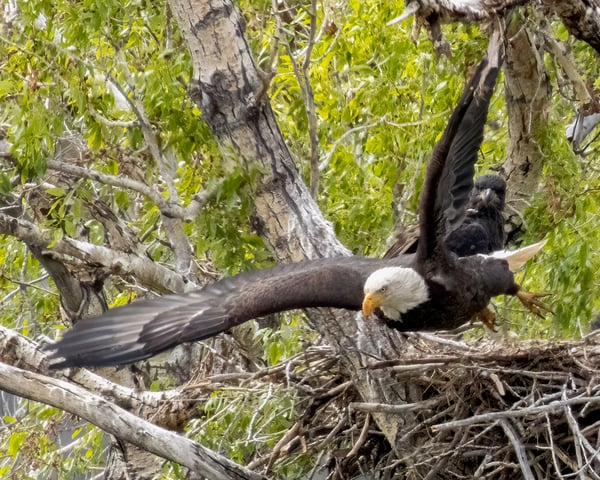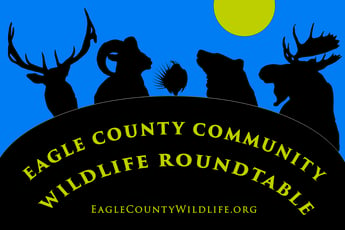This article is from the Eagle County Community Wildlife Roundtable.
Text by Michael Browning
Photographs by Rick Spitzer (except as noted.)
RECENT SURVEY SHOWS STRONG SUPPORT FOR WILDLIFE IN EAGLE COUNTY
Local wildlife advocates often claim in public meetings, letters to the editor, and daily conversations that Eagle County residents highly prize our local wildlife and want local governments to do even more to protect them. But is this true?
Absolutely yes, according to a social science survey released last year by Colorado Parks and Wildlife (CPW). 100% of all mail survey respondents (and 98% of telephone respondents) indicated that sustaining wildlife populations in Eagle County was somewhat, moderately, or very important to them. It was “very important” to 84% of mail survey respondents.
Developers and people who encroach on a raptor's nest site may cause the birds to permanently abandoned the site.
The scientific survey was designed to gauge the attitudes of Eagle County residents about wildlife, and the balance residents desire between wildlife protection, land development, and private recreation. Entitled Conservation at the Intersection: Examining residents’ perceptions of and preferences for wildlife outdoor recreation, and development, the study was prepared for CPW by Mike Quartuch, Ph.D., CPW Human Dimensions Specialist/Researcher.
The survey was mailed in the Fall of 2021 to 3,000 residents in Eagle County (roughly 10% of all registered voters in the County). Some 863 residents responded to the survey and, after removing 295 people from the sample (due to incorrect addresses), the final response rate was 31%, which is pretty good for this type of survey.
The mail survey represents a true cross-section of Eagle County residents as it was sent to a proportion of residents across towns, cities, and unincorporated areas based on the population of individuals in the county. Another 408 residents responded to a shorter version of the survey via telephone. Results from the two surveys were similar across most survey questions.
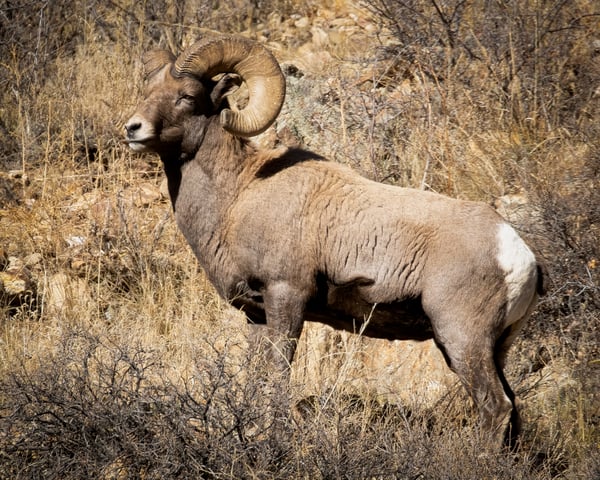
Sustaining wildlife populations, like this bighorn ram, in Eagle County was “very important” to 84% of survey respondents.
What if protection of wildlife interferes with land development or residents’ own use of public land? 82% of mail and 75% of telephone survey respondents agreed with statements prioritizing the protection of wildlife even if doing so restricted future land use development projects. Moreover, more than three-quarters (77%) of mail respondents and 73% of telephone respondents agreed that wildlife habitat should be protected even if doing so limited their own outdoor recreation opportunities. In contrast, only 8% of mail respondents and 11% of telephone respondents preferred more recreation opportunities even if it reduced wildlife habitat in Eagle County.
A majority of Eagle County residents are also very concerned about wildlife habitat: 84% agreed with the statement “I am concerned that important wildlife habitat in Eagle County may be converted for residential or commercial development in the near future.” Further, 64% strongly agreed with this statement.
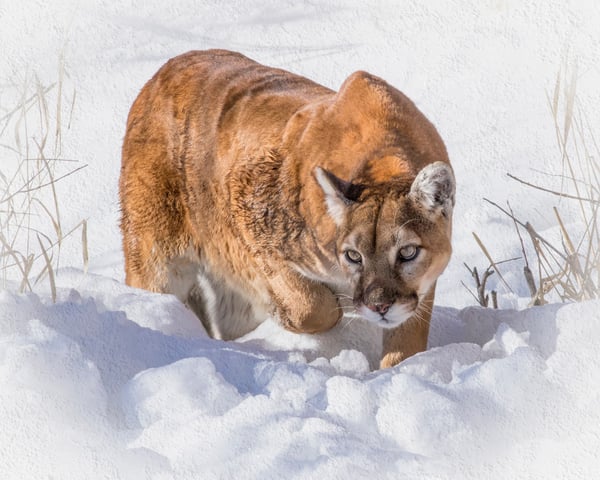
Few people have ever seen a mountain lion, but the impact of development on habitat used for grazing reduces mule deer populations, which in turn reduces mountain lion populations.
The survey also found that Eagle County residents do not believe that local governments place a high enough priority on the protection of critical wildlife habitat. A majority of respondents believed governments in Eagle County currently consider habitat protection only as a moderate (48%) or low-level (34%) priority, while the vast majority of respondents believe a high (73%) or moderate (26%) level priority should be given to protecting critical wildlife habitat.
Eagle County residents also showed strong support for open space in the county. More than three-quarters (77%) of survey respondents said that acquiring, maintaining, and preserving open space over the next 5-10 years should be a high priority, with an additional 18% considering it a medium-level priority.
As the survey report summarizes “Results from our study clearly illustrated the importance of wildlife to Eagle County residents. Not only do residents hold overwhelmingly positive attitudes about wildlife but these sentiments manifested in other ways including but not limited to interests in sustaining wildlife populations, the prioritization and protection of critical wildlife habitat, concerns about losing wildlife habitat due to residential and development, and preferences to protect wildlife/habitat even if doing so limited future recreation and development opportunities.”
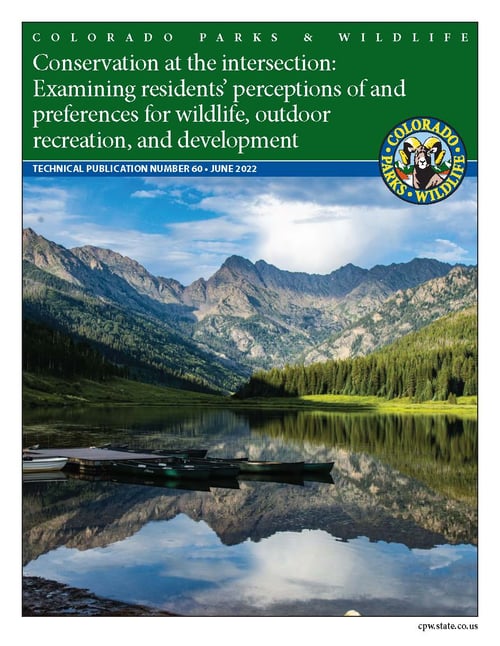
A social science survey released last year by Colorado Parks and Wildlife (CPW) indicated that sustaining wildlife populations in Eagle County was “very important” to Eagle County residents. (Cover photo, by Rick Spitzer, is Piney Lake in Eagle County.)
The survey and resulting report were the result of a collaborative partnership between CPW and the Eagle County Community Wildlife Roundtable. The Roundtable consists of representatives of the White River National Forest office, CPW, BLM, local Eagle County government entities, community members, and citizen scientists.
The purpose of the Roundtable is to gather a diverse group of local stakeholders to understand and address issues facing our local wildlife populations and identify a shared vision and realistic actions the community can rally around to support wildlife. The 2021 survey was intended to gauge the local community’s view of and support for local wildlife and the protection of critical wildlife habitat.
In upcoming months, the Roundtable will publish a series of articles in the Vail Daily about protecting and preserving wildlife in Eagle County, including the current state of various local wildlife populations and what we can all do to help protect them. The Roundtable is hopeful that the community’s prioritization of wildlife will also serve as a foundation for local governments and other decision makers to advance the protection of wildlife when they consider proposals for new developments and/or recreational activities that might jeopardize wildlife or critical wildlife habitat.
A full copy of the 2022 survey report can be found at: https://cpw.state.co.us/Documents/Research/SocialScience/22-CPW-Tech-Report-60-Conservation-Intersection-Eagle-MRQ.pdf. More information about the Roundtable can be found at https://blog.walkingmountains.org/eagle-county-wildlife/author/eagle-county-community-wildlife-roundtable.
Mike Browning is a member of the Education and Outreach Committee of the Eagle County Community Wildlife Roundtable. He is also a Board member and past Chair of the Eagle Summit Wilderness Alliance. ESWA is a local, all-volunteer nonprofit that works with the USFS to help protect, preserve and maintain the Wilderness Areas in Eagle and Summit Counties and the related ecosystems.
======================================
The Eagle County Community Wildlife Roundtable is a collaborative partnership with the White River National Forest, Colorado Parks and Wildlife, Bureau of Land Management, local government entities, community members, and citizen scientists. The purpose of the Eagle County Community Wildlife Roundtable is to gather a group of diverse stakeholders in the valley to understand and address issues facing wildlife populations. Together we will identify a shared vision and realistic actions that the community can rally around to support wildlife. We want to leverage diverse values, creativity, and resources to move toward positive action.
======================================


